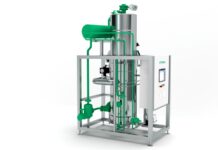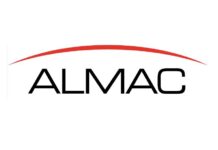The pharmaceutical manufacturing sector stands at the forefront of a digital transformation revolution, where using digital twins to optimize pharmaceutical plant performance has emerged as one of the most promising technologies for enhancing operational excellence and manufacturing efficiency. Digital twin technology creates virtual replicas of physical manufacturing systems that enable real-time monitoring, predictive analysis, and optimization activities without disrupting actual production operations. These sophisticated digital models integrate vast amounts of sensor data, process parameters, and historical performance information to provide unprecedented insights into plant operations and identify opportunities for improvement that were previously impossible to detect.
The global digital twin technology market in pharmaceutical manufacturing is experiencing explosive growth, with industry analysts projecting a compound annual growth rate of 31.3% through 2034. This remarkable expansion reflects the technology’s proven capability to deliver substantial operational improvements, including capacity increases of 25-40% and lead time reductions of 15-20% in facilities implementing comprehensive digital twin strategies. The convergence of artificial intelligence, machine learning, and Internet of Things technologies creates the foundation for digital twin implementations that can transform pharmaceutical manufacturing from reactive, experience-based operations into predictive, data-driven systems that continuously optimize performance.
Digital Twin Technology Fundamentals
Architecture and Core Components
Digital twin implementations in pharmaceutical manufacturing require sophisticated architectures that integrate multiple technology layers to create comprehensive virtual representations of physical systems. The foundational layer consists of extensive sensor networks that monitor equipment conditions, environmental parameters, and process variables throughout manufacturing facilities. These sensors provide real-time data streams that feed into advanced analytics platforms capable of processing enormous volumes of information simultaneously.
The computational core of digital twin systems combines mechanistic process models with machine learning algorithms to create hybrid representations that capture both theoretical understanding and empirical observations. These integrated models provide more accurate predictions than purely mechanistic or statistical approaches alone, enabling more precise optimization and control strategies. The hybrid modeling approach ensures that digital twins remain relevant and accurate as manufacturing conditions evolve over time.
Cloud-based infrastructure provides the scalable computational resources necessary for complex digital twin applications while enabling access from multiple locations and devices. Modern pharmaceutical companies operate global manufacturing networks where digital twin insights must be accessible to technical teams, management personnel, and regulatory authorities across multiple time zones and geographic regions. Cloud deployment models support this accessibility requirement while providing the security and compliance features essential for pharmaceutical applications.
Data Integration and Management
Comprehensive data integration represents one of the most critical aspects of successful digital twin implementations in pharmaceutical manufacturing. Modern production facilities generate enormous quantities of data from process control systems, quality monitoring equipment, environmental sensors, and maintenance management systems. Digital twin platforms must seamlessly integrate these diverse data sources while maintaining data integrity, traceability, and security throughout the integration process.
Real-time data processing capabilities enable digital twins to provide immediate insights and recommendations based on current operating conditions. Advanced stream processing technologies analyze sensor data as it is generated, identifying trends, anomalies, and optimization opportunities within seconds of their occurrence. This real-time capability enables proactive interventions that prevent quality deviations and equipment failures before they impact production operations.
Historical data analytics provide the foundation for learning algorithms that improve digital twin accuracy and predictive capabilities over time. Machine learning models analyze years of manufacturing data to identify subtle patterns and relationships that inform optimization recommendations. The continuous learning capability ensures that digital twins become more valuable as they accumulate operational experience and process knowledge.
Plant Performance Optimization Applications
Predictive Maintenance Implementation
Predictive maintenance represents one of the most immediately valuable applications of digital twin technology in pharmaceutical manufacturing. Traditional maintenance approaches rely on predetermined schedules or reactive responses to equipment failures, both of which can result in unnecessary costs and production disruptions. Digital twins enable condition-based maintenance strategies that optimize maintenance timing based on actual equipment health rather than arbitrary schedules.
Advanced vibration analysis, thermal monitoring, and performance trending capabilities enable digital twins to detect early signs of equipment degradation before failures occur. These systems can differentiate between normal operational variations and developing problems, reducing false alarms while ensuring that genuine issues receive immediate attention. The improved accuracy of equipment health assessments supports more effective maintenance planning and spare parts inventory management.
Maintenance optimization algorithms integrated within digital twin platforms can schedule maintenance activities to minimize production disruptions while ensuring equipment reliability. These systems consider production schedules, equipment criticality, maintenance resource availability, and other constraints to identify optimal maintenance timing. The holistic optimization approach maximizes equipment availability while minimizing maintenance costs and production interruptions.
Process Simulation and Optimization
Digital twin platforms enable sophisticated process simulation capabilities that allow manufacturers to evaluate potential improvements without disrupting actual production operations. Virtual experimentation can explore different operating conditions, equipment configurations, and process parameters to identify optimization opportunities. This simulation capability significantly reduces the time and resources required for process development and improvement activities.
Real-time process optimization utilizes digital twin models to continuously adjust manufacturing parameters based on current conditions and predicted outcomes. These systems can automatically modify temperature profiles, flow rates, mixing speeds, and other variables to maintain optimal product quality while maximizing productivity. The continuous optimization capability results in more consistent batches and improved overall manufacturing performance.
Advanced process control integration connects digital twin insights with manufacturing execution systems to implement optimization recommendations automatically. These integrated systems can make real-time adjustments to process parameters while maintaining appropriate safety margins and regulatory compliance requirements. The automated implementation capability ensures that optimization opportunities are captured consistently without requiring manual intervention.
Manufacturing Excellence Enhancement
Quality by Design Integration
Digital twins support Quality by Design principles by providing comprehensive understanding of process behavior and variability across all manufacturing conditions. These systems can map design spaces, identify critical quality attributes, and establish control strategies based on real manufacturing data rather than limited experimental studies. The comprehensive process understanding enables more robust quality assurance approaches that prevent problems rather than detect them after they occur.
Risk assessment capabilities integrated within digital twin platforms can evaluate potential failure modes and their impacts on product quality and patient safety. These systems analyze historical data, process capabilities, and external factors to quantify risks and prioritize mitigation efforts. The systematic risk analysis supports more effective quality management strategies while ensuring appropriate allocation of resources and attention.
Continuous process verification utilizes digital twin monitoring capabilities to demonstrate ongoing process control and product quality. These systems provide real-time evidence that manufacturing processes remain within validated parameters while producing products that meet specifications. The continuous verification capability supports regulatory compliance while reducing the burden of traditional quality control testing.
Supply Chain Integration and Optimization
Digital twin implementations can extend beyond individual manufacturing facilities to encompass entire supply chain networks, providing end-to-end visibility and optimization capabilities. These integrated systems track raw materials from suppliers through manufacturing processes to final product distribution, identifying bottlenecks and optimization opportunities throughout the value chain. The comprehensive visibility enables more effective coordination and planning across multiple facilities and organizations.
Demand forecasting and inventory optimization capabilities utilize digital twin insights to balance manufacturing capacity with market requirements. These systems can predict demand patterns, identify seasonal variations, and optimize production schedules to minimize inventory costs while ensuring product availability. The integrated planning capability reduces waste while improving customer service levels.
Logistics optimization algorithms integrated within digital twin platforms can optimize transportation routes, warehouse operations, and distribution strategies. These systems consider manufacturing schedules, demand forecasts, transportation costs, and delivery requirements to minimize total supply chain costs while meeting customer expectations. The comprehensive optimization approach creates competitive advantages through improved efficiency and customer service.
Advanced Analytics and Intelligence
Artificial Intelligence Integration
The integration of artificial intelligence technologies with digital twin platforms creates unprecedented capabilities for pharmaceutical plant optimization. Machine learning algorithms analyze vast quantities of operational data to identify patterns, predict outcomes, and recommend optimization strategies that would not be apparent through traditional analysis methods. These AI-powered insights enable more sophisticated decision-making and process optimization approaches.
Natural language processing capabilities enable digital twin systems to analyze textual information such as batch records, deviation reports, and maintenance logs. These systems can extract meaningful insights from unstructured data sources while identifying trends and patterns that inform optimization recommendations. The text analysis capability provides more comprehensive understanding by incorporating qualitative information along with quantitative measurements.
Computer vision applications enable digital twin systems to monitor manufacturing operations through automated analysis of images and video feeds. These systems can detect equipment anomalies, product quality issues, and safety concerns that might not be apparent through traditional sensor measurements. The visual monitoring capability provides additional layers of oversight and quality assurance.
Real-Time Decision Support
Intelligent alerting systems integrated within digital twin platforms provide context-aware notifications that help operators and engineers respond quickly to developing situations. These systems can prioritize alerts based on severity, impact, and urgency while providing relevant background information and recommended actions. The intelligent alerting capability reduces information overload while ensuring that critical issues receive immediate attention.
Decision support algorithms analyze current conditions, historical performance, and predictive models to recommend optimal responses to various manufacturing situations. These systems can suggest process adjustments, maintenance activities, quality control measures, and other interventions based on comprehensive analysis of available information. The decision support capability enhances human expertise while ensuring consistent response to common situations.
Automated reporting capabilities generate comprehensive performance summaries, trend analyses, and compliance documentation based on digital twin data. These systems can create regulatory submissions, management reports, and technical documentation automatically while ensuring accuracy and completeness. The automated reporting capability reduces administrative burden while improving consistency and timeliness of documentation activities.
Implementation Strategies and Best Practices
Phased Deployment Approaches
Successful digital twin implementations in pharmaceutical manufacturing typically follow phased deployment strategies that begin with pilot applications and gradually expand to encompass entire facilities. Initial implementations often focus on critical equipment or processes where digital twin benefits can be demonstrated quickly and measured quantitatively. These pilot projects provide learning opportunities while building organizational confidence and expertise.
Change management considerations become particularly important for digital twin implementations that may significantly alter traditional working methods and decision-making processes. Training programs, communication strategies, and stakeholder engagement activities ensure that personnel understand digital twin capabilities and benefits. The human factors aspects of implementation often determine success more than technical considerations.
Integration planning must consider existing systems, data sources, and organizational capabilities when designing digital twin implementations. Pharmaceutical companies typically operate complex IT environments with numerous legacy systems that must be integrated or interfaced with new digital twin platforms. The integration complexity requires careful planning and systematic execution to avoid disruptions to ongoing operations.
Validation and Regulatory Compliance
Digital twin validation requirements encompass both traditional computer system validation principles and unique considerations for AI and machine learning components. Validation protocols must demonstrate that digital twin systems perform as intended while maintaining appropriate accuracy and reliability over time. The validation approach should address algorithm transparency, data integrity, and change control procedures specific to learning systems.
Regulatory compliance considerations for digital twin systems include data integrity requirements, audit trail maintenance, and electronic signature compliance. These systems often handle critical manufacturing and quality data that must meet stringent pharmaceutical regulatory standards. Compliance frameworks must address both current operations and future regulatory expectations as digital twin technology continues to evolve.
Documentation requirements for digital twin implementations include system architecture descriptions, algorithm specifications, validation protocols, and user training records. Regulatory agencies expect comprehensive documentation that demonstrates how digital twin systems support manufacturing decisions and ensure product quality. The documentation should provide clear audit trails that support regulatory inspections and ongoing compliance monitoring.
Future Developments and Emerging Trends
Advanced Technology Integration
Quantum computing applications in digital twin systems offer potential for solving complex optimization problems that are currently intractable with classical computational approaches. These advanced computational capabilities could enable real-time optimization of entire manufacturing networks with hundreds of interacting variables and constraints. The quantum advantage becomes particularly relevant for complex scheduling, resource allocation, and process optimization problems.
Blockchain technology integration provides secure, tamper-proof documentation of digital twin decisions and recommendations. These systems can create immutable audit trails that demonstrate how optimization recommendations were generated and implemented. The blockchain capability becomes particularly valuable for regulatory compliance and quality assurance applications where data integrity is paramount.
Extended reality technologies including virtual and augmented reality enable immersive interactions with digital twin systems. These interfaces allow operators and engineers to visualize complex process interactions, explore optimization scenarios, and receive contextual guidance during maintenance and troubleshooting activities. The immersive capability enhances understanding while improving training effectiveness and decision-making speed.
Industry Transformation Implications
The widespread adoption of digital twin technology in pharmaceutical manufacturing promises to transform industry competitive dynamics by enabling more agile, efficient, and responsive operations. Companies that successfully implement comprehensive digital twin strategies will establish significant advantages in terms of cost, quality, and time-to-market that may be difficult for competitors to match. The technology creates opportunities for entirely new business models and value propositions.
Collaborative digital twin networks connecting multiple facilities, suppliers, and customers create opportunities for industry-wide optimization and coordination. These connected ecosystems enable more sophisticated supply chain management, quality assurance, and innovation processes that benefit all participants. The collaborative approach represents the evolution from facility-level optimization toward industry ecosystem optimization.
The integration of digital twin technology with other Industry 4.0 technologies creates synergistic effects that multiply the benefits of individual implementations. The convergence of artificial intelligence, robotics, advanced materials, and digital twins enables pharmaceutical manufacturing capabilities that exceed the sum of individual technology contributions. This technological convergence represents the foundation for next-generation pharmaceutical manufacturing systems that will define competitive advantage in the digital age.
Digital twin technology represents a transformative opportunity for pharmaceutical manufacturers to achieve unprecedented levels of operational excellence while maintaining the highest standards of quality and regulatory compliance. Organizations that successfully implement comprehensive digital twin strategies will establish sustainable competitive advantages through enhanced manufacturing capabilities, reduced operational costs, and improved product quality. The continued evolution of digital twin technology promises even greater opportunities for innovation and optimization, making this technology essential for pharmaceutical manufacturers seeking leadership in the digital manufacturing era.



















